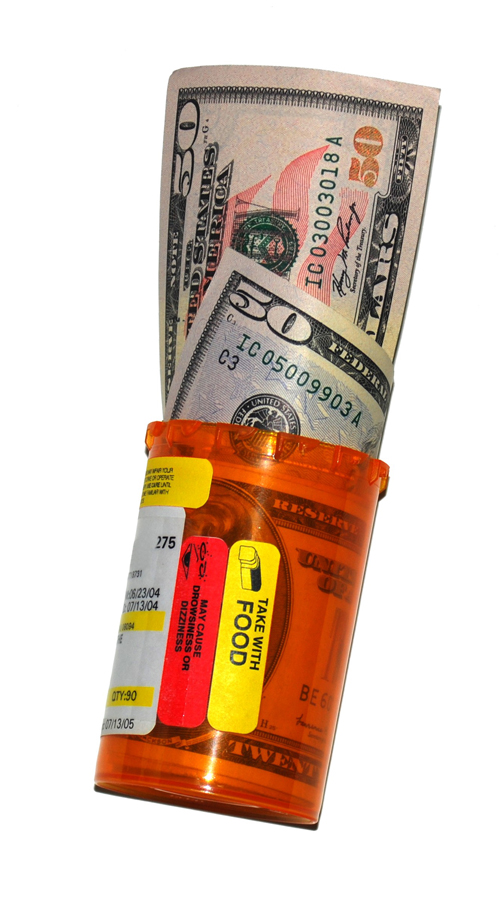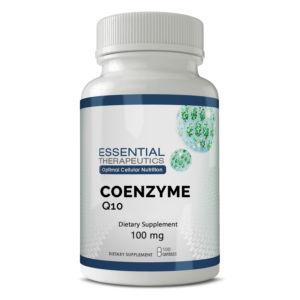Big Money Business
 Americans now spend over $300 billion a year on prescription drugs, and this spending continues to increase by an average of 12 percent each year. Drugs are now the fastest-growing part of the staggeringly high American health-care bill. According to market research, the worldwide pharmaceutical market was worth nearly $1.3 trillion in 2019 and the top 10 pharma companies accounted for around a third of sales ($392.5 billion).
Americans now spend over $300 billion a year on prescription drugs, and this spending continues to increase by an average of 12 percent each year. Drugs are now the fastest-growing part of the staggeringly high American health-care bill. According to market research, the worldwide pharmaceutical market was worth nearly $1.3 trillion in 2019 and the top 10 pharma companies accounted for around a third of sales ($392.5 billion).
This is more than all the rest of the 490 Fortune 500 companies put together! These same 10 companies spent over $2 billion on advertising and marketing last year.
It seems the more they advertise, the more they rake in. But drugs have to be expensive, right? All that money for research and development has to come from somewhere. Don’t believe it. In reality, in 2002 (the date of an extensive nonprofit investigation), only about 14 percent of Fortune 500 drug-company revenues were applied toward research and development. Over 30 percent were devoted toward marketing and administration. Around 17 percent was received as profit.
Pharmaceutical CEOs represented 11 of the 25 highest compensation amounts last year.
The chief executives of 177 health care companies collectively made $2.6 billion in 2018.
The median pay of a health care CEO in 2018 was $7.7 million. Fourteen CEOs made more than $46 million each.
The highest-paid health care CEO last year was Regeneron Pharmaceuticals’ Leonard Schleifer, who made $118 million.
Remember this when you wonder why your health insurance premiums continue to rise. You can read more about the over-medication of Americans in Melody Peterson’s book Our Daily Meds. “In this profit-driven world of medicine, I did not often hear the executives talk of cures. Instead, they focused like honeybees circling a picnic cake on products for what they called chronic disorders. These were drugs that did not cure but ‘managed’ disease as patients took them once a day for the rest of their lives.”
—MELODY PETERSON, FORMER MEDICAL REPORTER FOR THE NEW YORK TIMES, AUTHOR OF OUR DAILY MEDS
Medications That Can Cause Nutritional Deficiencies
- ACE inhibitors (Accupril, Aceon, Altace, Capoten, Lexxel, Lotensin, Mavik, Monopril, Lisinopril, Prinivil, Tarka, Univasc) deplete zinc.
- Acid reducers (Prevacid, Prilosec, Nexium, Aciplex) deplete B12 and calcium.
- Antibiotics deplete Lactobacillus acidophilus, Bifidobacteria bifidum, and other good bacteria; vitamins B1, B2, B3, B6, B12, and K; biotin; and inositol.
- Aspirin depletes folic acid, iron, potassium, and vitamin C.
- Benzodiazepines (Klonopin, Valium, Ativan, Xanax, BuSpar) deplete vitamin B12 and CoQ10.
- Beta-blockers (Atenolol, Tenormin, Lopressor, Toprol, Inderal) deplete CoQ10.
- Bile acid sequestrants (Questran, Lopid, Atromid) deplete beta carotene, folic acid, calcium, magnesium, zinc, and vitamins B12, A, D, E, and K.
- Carbamazepine (Tegretol) depletes biotin, folic acid, and vitamin D.
- Centrally acting antihypertensives (Catapres, Tenex) deplete CoQ10.
- Corticosteroids (cortisone, dexamethasone, hydrocortisone, prednisone) deplete calcium, folic acid, magnesium, potassium, selenium, vitamin C, vitamin D, and zinc.
- Digoxin (Lanoxin) depletes calcium, magnesium, phosphorus, and vitamin B1.
- Estrogen (Estrace, Premarin) depletes magnesium, omega-3 fatty acids, vitamin B1, and zinc.
- Famotidine and other H2-blocking drugs (Pepcid, Pepcid AC, Axid, Tagamet, Zantac) deplete calcium, folic acid, iron, vitamin B12, vitamin D, and zinc.
- Glucophage (Metformin) depletes vitamin B12.
- Hydrochlorothiazide (Dyazide, Maxzide, Microzide) depletes calcium, folic acid, and vitamin B6.
- Lamictal depletes vitamin B12 and CoQ10.
- Loop diuretics (Lasix, Bumex) deplete calcium, magnesium, potassium, zinc, and vitamins B1 and B6.
- NSAIDs (Celebrex, Mobic, Advil, Motrin, Aleve, Relafen) deplete folic acid.
- Omeprazole (Prilosec) depletes vitamin B12.
- Oral contraceptives deplete vitamin C, vitamin B2, folic acid, magnesium, vitamin B6, vitamin B12, and zinc.
- Pravastatin (Pravachol) depletes CoQ10.
- Ranitidine (Zantac) depletes calcium, folic acid, iron, vitamin B12, vitamin D, and zinc.
- Statin drugs (Lipitor, Zocor, Crestor, Vytorin, etc.) deplete CoQ10.
- Sulfonylureas (Diabeta, Micronase, Glucovance) deplete CoQ10.
- Tetracycline, since it’s an antibiotic, depletes Lactobacillus acidophilus, Bifidobacteria bifidum, and other good bacteria; vitamins B1, B2, B3, B6, B12, and K; biotin; and inositol. It also depletes calcium, magnesium, and iron.
- Thiazide diuretics (Enduron, Microzide) deplete magnesium, potassium, zinc, and CoQ10.
- Triamterene (Dyrenium) depletes calcium, folic acid, and zinc. This could cause fatigue, depression, anxiety, and poor immunity.
- Tricyclic antidepressants (Elavil, Pamelor, Doxepin, Trazodone, Sinequan, Tofranil, Remeron) deplete CoQ10 and vitamin B2.
- Trileptal depletes vitamin B12 and CoQ10.
- Valproic acid (Depacote) depletes carnitine and folic acid.

Drugs that deplete CoQ10, magnesium, and B vitamins create the perfect storm for those with chronic illnesses. Here’s why:

COENZYME-Q10 is now 15% off with the code: CQ10SALE (Cannot be combined with any other coupon code or offers).
CoQ10 provides the spark for cellular energy. Without adequate CoQ10, the body’s energy is drastically reduced, and this can trigger a whole host of unwanted health problems. Many drugs deplete CoQ10, and individuals with chronic illness are often low in CoQ10 already. Magnesium is perhaps the most important mineral in the body. It helps regulate the neurotransmitters. It also naturally relaxes tight, achy muscles and corrects constipation (which is a common sign of magnesium depletion). Seventy percent of the population is deficient in this mineral, including around 90 percent of chronically ill patients. Low magnesium can cause high blood pressure, mitral valve prolapse, tight and achy muscles, muscle spasms, constipation, chronic headaches, migraines, anxiety, depression, fatigue, irregular heartbeats, insomnia, hair loss, confusion, and more.
Folic Acid is one of the most potent antidepressants known. Lowered levels of this important B vitamin can cause depression, insomnia, heart problems, high blood pressure, and GI disorders.
Vitamin B6 is involved in more bodily functions than any other vitamin. It regulates the production of the neurotransmitters serotonin, dopamine, and norepinephrine. Low levels of B6 can cause anxiety, depression, insomnia, tingling in the hands and feet, lowered immune function, fluid retention, and chronic headaches. If you’re taking prescription drugs, please make sure you’re taking a good multivitamin.
Saw Palmetto Shrinks Prostate Tissues
In the first American randomized clinical trial of saw palmetto (Serenoa repens [Bartr.] Small, Arecaceae), the respected prostate herb proved beneficial in reducing swelling of prostate tissues in patients with benign prostatic hyperplasia (BPH). While numerous studies have confirmed the ability of saw palmetto extract (SPE) to reduce BPH symptoms, this is the first evidence that it actually shrinks enlarged prostate tissues (Overmyer, 1999).
The randomized, double-blind, placebo-controlled clinical trial involved 44 men with symptomatic prostate enlargement who took 320mg of saw palmetto extract with nettle root extract or placebo for six months (Nutrilite® saw palmetto with nettle toot, Nutrilite Division of Amway, Ada, MI). Researchers tested the participants for the usual clinical parameters, including International Prostate Symptom Score (IPSS), maximum urinary flow rate, residual urine volume, prostate volume, and prostate-specific antigen (PSA, described below). Unlike previous research, this study included an ultrasound-guided prostate biopsy, allowing the scientists to assess changes in the participants’ prostate tissue. Biopsies were taken at the baseline and after six months of treatment. As with previous research, SPE proved effective (or “somewhat effective,” according to the researchers) in reducing overall symptom score and maximum urinary flow. Although symptom score (IPSS) dropped in the SPE group, it dropped similarly in the placebo group (2.9 and 2.6, respectively). The urinary flow rate increased in the SPE group while declining in the placebo group. There were no effects on hormone levels or other blood parameters. The most intriguing part of this story is that SPE suppressed swelling of the prostate epithelium, causing a contraction in the tissues in the epithelium of the prostate and the transitional zone. Interestingly, SPE produced this benefit without affecting the levels of testosterone or dihydrotestosterone, which means that SPE works by an unidentified but nonhormonal mechanism. This is especially good news for men because conventional drug therapy for BPH frequently causes hormonal side effects, including reduced sex drive and performance. It should also be good news for doctors, because SPE did not affect the level of PSA in the blood. PSA tests are used to detect prostate cancer, and conventional therapy interferes with PSA testing by masking this early warning sign. Saw Palmetto can be found at any health food store.

Oolong tea helps in the treatment of stubborn atopic dermatitis
 An open Japanese study suggests that consumption of oolong tea (Camellia sinensis) helps speed clearance of recalcitrant atopic dermatitis lesions. The 118 study participants continued their usual dermatologic treatments but also drank oolong tea (10g steeped in 1000mL of water a day, divided into three doses). Beneficial results were noted after one to two weeks, and 74 (63 percent) of the participants showed marked to moderate improvement of lesions after one month. After six months, 64 patients (54 percent) still demonstrated a good response to treatment. The study builds on animal research, showing that oral administration of green, black, or oolong tea suppressed allergic skin reactions.
An open Japanese study suggests that consumption of oolong tea (Camellia sinensis) helps speed clearance of recalcitrant atopic dermatitis lesions. The 118 study participants continued their usual dermatologic treatments but also drank oolong tea (10g steeped in 1000mL of water a day, divided into three doses). Beneficial results were noted after one to two weeks, and 74 (63 percent) of the participants showed marked to moderate improvement of lesions after one month. After six months, 64 patients (54 percent) still demonstrated a good response to treatment. The study builds on animal research, showing that oral administration of green, black, or oolong tea suppressed allergic skin reactions.
Oolong tea can be found at most health food stores.
Nettle sting effective for treatment of osteoarthritis pain
Nettle sting as a treatment for osteoarthritis pain has a long history of traditional use, but few clinical studies have investigated the effectiveness of this practice. This small, placebo-controlled study showed that daily application of fresh stinging nettle leaf (Urtica dioica) was significantly more effective than placebo in relieving osteoarthritis pain at the base of the thumb. For the study, 27 people applied stinging nettle leaf to the painful area once daily for one week. After a five-week washout period, the treatment was repeated using a placebo (Lamium album, or white deadnettle, which looks similar to stinging nettle but does not sting).
Patients and physicians were both unaware of the treatment order; patients were told that the researchers were investigating two different types of nettle and that they might experience a harmless stinging sensation. According to the results, reductions in pain and disability scores were significantly greater with nettle treatment than with placebo. The investigators concluded, “The stinging nettle is a freely available plant and its sting seems a safe treatment for musculoskeletal pain.” Nettles can be found at any health food store.